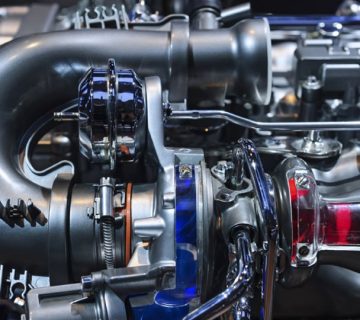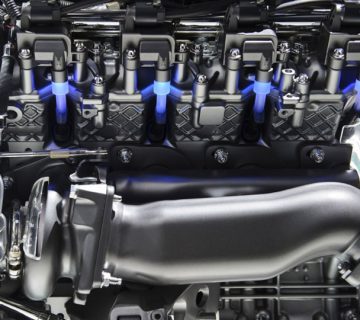⑴Manual transmission—MT
Manual transmission (MT) is also called mechanical transmission. The manual transmissions of cars are mostly four-speed or five-speed stepped gear transmissions, and usually have synchronizers, which are convenient for shifting and have low noise. Heavy-duty trucks usually use combined transmissions, that is, the main and auxiliary transmissions, which generally have more than ten speeds. The manual transmission has high transmission efficiency, but frequent shifting operations of vehicles equipped with MT can easily fatigue the driver. Different levels of driving technology cause great differences in vehicle fuel economy, power, and ride comfort. Higher.
⑵CVT—CVT
CVT (Continuously Variable Transmission), also known as continuously variable transmission, has a history of more than 100 years. The difference between a CVT and a stepped transmission is that its speed ratio is not a discontinuous point, but a series of continuous values, thereby achieving good economy, power and driving comfort, and reducing emissions and costs. It has a self-protection effect, but its efficiency is low and the transmission ratio is not fixed.
⑶ Hydraulic automatic transmission—AT
AT (Automatic Transmission) is a hydraulic automatic transmission, which is composed of a torque converter, a planetary gear and a hydraulic operating system. Hydraulic automatic transmission has the advantages of power shift (short shift time, small impact), smooth start, strong adaptability to torque changes, mature manufacturing process and production technology, and low manufacturing costs at the current stage. It is widely used in Cars, buses, heavy vehicles and commercial vehicles are currently the mainstream products of automatic transmissions.
⑷Electrically controlled mechanical automatic transmission—AMT
The electronically controlled mechanical automatic transmission (Automated Manual Transmission, AMT for short) is based on the mechanical gearbox, and mainly changes the manual shift operation part. That is, under the condition that the overall transmission structure is unchanged, the automatic shifting system is realized by installing an automatic control system controlled by a microcomputer. The core technology of AMT is microcomputer control. Electronic technology and quality will directly determine the performance and operating quality of AMT. Its technology is relatively mature, with high transmission efficiency, low cost, and good fuel economy, but it has a great sense of gearshift frustration.
⑸Dual Clutch Automatic Transmission—DCT
Dual Clutch Transmission DCT (Dual Clutch Transmission) DCT is divided into two types: wet and dry. The wet type has more transmission oil, which has a larger volume and can withstand larger torque. The dry type has less transmission oil and has a smaller volume. Smaller, more compact and more efficient, suitable for small cars, but can withstand less torque than wet. DCT is different from ordinary automatic transmission systems. In addition to the flexibility, fuel economy and comfort of automatic transmissions, DCT also provides uninterrupted power output. After more than ten years of development, it has been widely used in ordinary cars, and it has become the future development direction of automobile transmissions, which has been valued by major automobile companies. At present, the core technology of DCT is controlled by BorgWarner in the United States and LUK in Germany. If China can master the core technology of DCT, the development prospects of DCT are quite optimistic.
Explanation of car gearbox types




